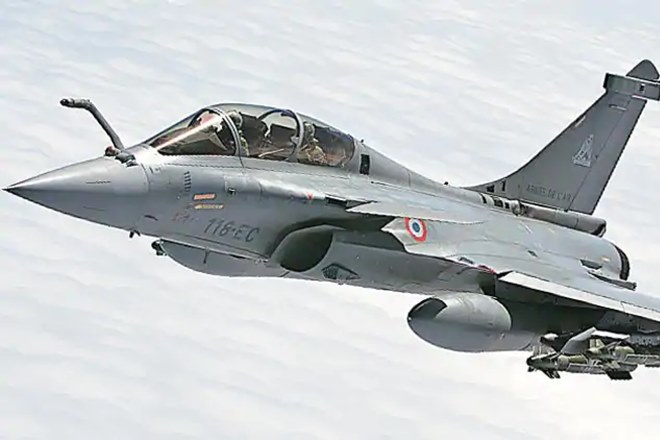The Rafale flew over political controversies and is now ready to be part of IAF’s arsenal. ET looks at the past and explains the future of this capable fighter aircraft.
As India prepares to officially ‘induct’ the French-made Dassault Rafale fighter aircraft, we look back at the political debate over IAF’s latest acquisition, and the future enhancements that will ensure its capabilities are well utilised. The jet will be formally handed over to Defence Minister Rajnath Singh for induction into the IAF when he visits France on the occasion of Dussehra on October 8.
The Rafale deal and its cost
The NDA government, in April 2015, announced a deal to buy 36 Rafale fighter jets off the shelf, about three years after the then Congress-led United Progressive Alliance government had selected Rafale for purchase from among competing aircraft. However, the UPA government had planned to buy 126 fighter jets, 108 of which were to be made in India by HAL.
Therefore, the NDA government has argued that the final deal with Dassault Aviation, which manufactures Rafale fighter jets, is not comparable with the UPA’s original negotiations. It has also dismissed the charge of favouring a private company over HAL, saying the government had no say in Dassault Aviation in choosing to partner Reliance Defence to meet its offset or export obligations.
The Congress had maintained that the government bought the jets at an inflated price of 7.87 billion euros (about Rs 59,000 crore). Congress president Rahul Gandhi had alleged in a tweet in March that the NDA government paid Rs 1,670 crore per aircraft while the UPA government had negotiated a price of Rs 570 crore. However, the defence ministry’s internal calculations, accessed by ET and reported by Manu Pubby, show that each Rafale jet works out Rs 59 crore cheaper than what it would have cost under the UPA deal.
The notes stated that with the India specific enhancements, under the UPA’s terms the Rafale jets would have cost Rs 1,705 crore per jet, compared with the Rs 1,646 crore the NDA government negotiated for the purchase of 36 combat aircraft. A big component of the cost is attributed to India-specific enhancements to the jets, from the ability to take off from high-altitude stations such as Leh to an enhanced infrared search and track sensor and a potent electronic jammer pod.
The cost of these enhancements has been taken as standard – they will cost the same for 36 jets as they would for 126 – since these are one-time research and development costs.
Given the complexity of the deal, the Congress argued that the 36 jets should have been way cheaper since they were being bought off the shelf. The government had said that not only are the jets negotiated by it cheaper but also armed with cutting-edge weapons and more efficient with a performance guarantee clause.
Bank guarantee on offsets
India may have managed to get just a ‘letter of comfort’ from France on the contract for 36 Rafale fighter jets, but it had secured a €185 million bank guarantee from Dassault as a safeguard against any violations of the offset policy, people familiar with the deal said.
A special clause in the deal, which mandated that 5% of the total offset value be kept as a buffer in case of non-performance, was invoked after officials insisted that the safeguard was needed to protect interests, the people told ET, which was also reported by Manu Pubby.
The €185 million bank guarantee has been deposited and will remain valid for seven years, the people said. The defence ministry would reserve the right to cash it in if it feels that the offset guidelines have been violated or that the French manufacturers have not executed them in the quantum promised.
Future-Proof
The Indian Air Force is set to get the `game changer’ SCALP and Meteor missiles for its Rafale fighter jets next year which will outrange all known weapon systems in the region and will give India a definitive combat edge.
The SCALP stand off missile, manufactured at the highly protected facility, has a range of over 300 km and is designed to hit high value, strongly protected targets deep inside enemy territory. The Rafale jets can carry two of the missiles that will enable them to hit virtually any target within Pakistan. The first Rafale jets are set to be formally handed over to India on October 8.
Another system that will add to this capability will be the Meteor air to air missile that will also be delivered for the Rafale fighter jets next year. With a range of over 150 km, the Meteor will outclass all other systems in the region. Including the AMRAAM missiles in service with Pakistani F 16 fighter jets that currently outgun Indian missile systems.




